Classic Life and Works of St. Basil the Great (17 vols.)
Digital Logos Edition
Overview
Fourth-century theologian and Greek bishop Basil of Caesarea supported the Nicene Creed and fought against the heresies that threatened the early church. As one of the Cappadocian Fathers, he advanced early Christian thought and helped establish important doctrines. Dedicated to monasticism, he emphasized communal living, serving the poor, and liturgical prayer. He also engaged with prominent Greek intellectuals and functioned powerfully in the political spheres of Asia Minor. For this and more he is revered as Saint Basil the Great.
This wide-ranging collection includes 17 volumes of works written by or about Saint Basil, including examinations of other philosophers and theologians who influenced his work.
In the Logos edition, these works are enhanced by amazing functionality. Scripture citations link directly to English translations, and important terms link to dictionaries, encyclopedias, and a wealth of other resources in your digital library. Perform powerful searches to find exactly what you’re looking for. Take the discussion with you using tablet and mobile apps. With Logos Bible Software, the most efficient and comprehensive research tools are in one place, so you get the most out of your study.

Key Features
- Analyses of the impact of Greek rhetoric on St. Basil and the early church
- Detailed investigation of St. Basil’s Rule for Christian monastics
- Historical context and reception of Basil’s monastic ideal, including the variations it spawned
- Historical investigation of the mystery or sacrament of Christian baptism
Product Details
- Title: Classic Life and Works of St. Basil the Great
- Volumes: 17
- Pages: 6,690
- Christian Group: Catholic
- Resource Type: Collected Works
- Topic: Theology
Individual Titles
- St. Basil and Greek Literature by Leo Vincent Jacks
- The Influence of Plato on Saint Basil by Theodore Leslie Shear
- The Influence of the Second Sophistic on the Style of the Sermons of St. Basil the Great by James Marshall Campbell
- St. Basil the Great by Richard Travers Smith
- St. Basil and His Rule: A Study in Early Monasticism by E.F. Morison
- St. Basil the Great: A Study in Monasticism by W.K. Lowther Clarke
- To Students on Greek Literature by St. Basil the Great
- A Treatise on Baptism and A Treatise on Confirmation by St. Basil the Great and Francis P. Kenrick
- Letters of St. Basil the Great, vol. 1 by Basil the Great
- Letters of St. Basil the Great, vol. 1: Greek Text by Basil the Great
- Letters of St. Basil the Great, vol. 2 by Basil the Great
- Letters of St. Basil the Great, vol. 2: Greek Text by Basil the Great
- Letters of St. Basil the Great, vol. 3 by Basil the Great
- Letters of St. Basil the Great, vol. 3: Greek Text by Basil the Great
- Letters of St. Basil the Great, vol. 4 by Basil the Great
- Letters of St. Basil the Great, vol. 4: Greek Text by Basil the Great
- St. Basil: Letters and Select Works by St. Basil the Great
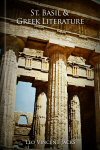
In his dissertation St. Basil and Greek Literature, Leo Vincent Jacks investigates St. Basil’s knowledge of Greek literature in order to ascertain the impact that Greek culture and philosophy had on him. Jacks also offers a chronological outline of St. Basil’s life and an index of authors connected with St. Basil.
Leo Vincent Jacks (1896–1972) earned his PhD from the Catholic University of America and taught at Creighton University, Omaha, Nebraska. He is the author of A Turquoise Rosary, La Salle, and Xenophon, Soldier of Fortune.
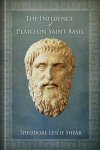
This book explores the influence of Plato on the language, philosophy, theology, and ethics of St. Basil—both directly (through St. Basil’s education and life experience) and indirectly (through Plato’s general impact on the early church fathers).
Theodore Leslie Shear (1880–1945) was an eminent archaeologist. He directed the American School excavations at the Athenian Agora, and was involved in the School’s excavations at ancient Corinth. Shear earned a PhD in philosophy from John Hopkins University, among other achievements.
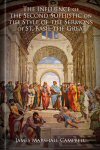
The Influence of the Second Sophistic on the Style of the Sermons of St. Basil the Great discusses the ways St. Basil’s writings reveal his sophistic training and includes such context as a history of Greek rhetoric, a chronological table outlining St. Basil’s rhetorical, political, and ecclesiastical life, and an overview of the Second Sophistic Period.
James Marshall Campbell (1895–1977) received his PhD from the Catholic University of America in 1922, and wrote or contributed to several books, including The Greek Fathers: Our Debt to Greece and Rome.
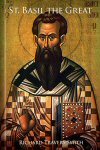
In St. Basil the Great, Richard Travers Smith provides a comprehensive look at the life of St. Basil, covering his early life, personality traits, career, theology, and asceticism—as well as the context of the times in which he lived and worked.
Richard Travers Smith was vicar of St. Bartholomew’s and St. Patrick’s churches in Dublin. He wrote several books, including The Church in France.
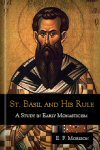
Besides providing an introductory and historical overview of the life and work of St. Basil the Great, this volume also covers in detail the various aspects of Basil’s monastic rule, including asceticism, community life, the work and discipline of a monk, and the idea of charity.
E.F. Morison was sub-warden of S. Deiniol’s Library and scholar of Lincoln College at Oxford.
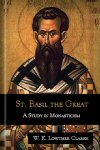
This volume discusses the role of asceticism in the early Church, the life of St. Basil, the precedent of Egyptian monasticism, the specific writings and rules of St. Basil for the monastic life, and the subsequent influence of Basil’s work on future monastics in both the east and west.
William Kemp Lowther Clarke (1879–1968) was the canon residentiary of Chichester.

To Students on Greek Literature
- Author: St. Basil the Great
- Translator: Edward R. Maloney
- Publisher: American Book Company
- Publication Date: 1901
- Pages: 86
This short work is an address given by St. Basil the Great to young students on the proper use of pagan Greek literature and philosophy. The text in this edition is the Greek of Jacques Paul Migne (1800–1875), a French Catholic priest who compiled and edited a vast array of patristic and other ancient Greek texts. The introduction discusses the life of St. Basil as well as this present work in English, while the text itself is only in Greek. Perfect for anyone looking to study the original Greek of this text, especially with the included notes and vocabulary on the Greek language.
St. Basil the Great (330–379) was bishop of Caesarea and an influential figure in the fourth-century Church. The Orthodox Church reveres him as one of the Three Holy Hierarchs (along with Ss. Gregory Nazianzus and John Chrysostom), and he is commemorated on January 1. He is best known for his monastic Rule as well as his monumental Treatise on the Holy Spirit. His homilies on the six days of creation (Hexaemeron) as well as on the Psalter are also treasured. The Divine Liturgy of Saint Basil the Great, used in the Orthodox Church throughout Great Lent, as well as on other specific feast days, is also attributed to him.
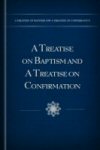
A Treatise on Baptism and A Treatise on Confirmation
- Authors: St. Basil the Great and Francis P. Kenrick
- Translator: Francis P. Kenrick
- Publisher: King and Baird
- Publication Date: 1843
- Pages: 261
This volume includes not only a theological and historical introduction to the history of Christian baptism, but also an English translation of two treatises by St. Basil the Great on both baptism and confirmation. Francis Kenrick discusses the mystery or sacrament of baptism from the days of John the Baptist to the later Christian era, covering topics of interest such as the necessity of baptism, the baptism of infants, and the various baptismal modes. The treatises from St. Basil cover both Christian baptism and the rite of confirmation or chrismation.
St. Basil the Great (330–379) was bishop of Caesarea and an influential figure in the fourth century Church. The Orthodox Church reveres him as one of the Three Holy Hierarchs (along with Ss. Gregory Nazianzus and John Chrysostom), and he is commemorated on January 1. He is best known for his monastic Rule as well as his monumental Treatise on the Holy Spirit. His homilies on the six days of creation (Hexaemeron) as well as on the Psalter are also treasured. The Divine Liturgy of Saint Basil the Great, used in the Orthodox Church throughout Great Lent, as well as on other specific feast days, is also attributed to him.
Francis Patrick Kenrick (1796–1863) was an Irish Catholic cleric. He served as the bishop of Philadelphia as well as Archbishop of Baltimore.
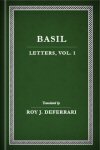
This volume contains an introduction to the influential life of Saint Basil, as well as Roy J. Deferrari’s translations of Letters I–LVIII.
St. Basil the Great (330–379) was bishop of Caesarea and an influential figure in the fourth century Church. The Orthodox Church reveres him as one of the Three Holy Hierarchs (along with Ss. Gregory Nazianzus and John Chrysostom), and he is commemorated on January 1. He is best known for his monastic Rule as well as his monumental Treatise on the Holy Spirit. His homilies on the six days of creation (Hexaemeron) as well as on the Psalter are also treasured. The Divine Liturgy of Saint Basil the Great, used in the Orthodox Church throughout Great Lent, as well as on other specific feast days, is also attributed to him.
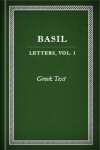
This volume contains the Greek texts of Letters I–LVIII.
St. Basil the Great (330–379) was bishop of Caesarea and an influential figure in the fourth century Church. The Orthodox Church reveres him as one of the Three Holy Hierarchs (along with Ss. Gregory Nazianzus and John Chrysostom), and he is commemorated on January 1. He is best known for his monastic Rule as well as his monumental Treatise on the Holy Spirit. His homilies on the six days of creation (Hexaemeron) as well as on the Psalter are also treasured. The Divine Liturgy of Saint Basil the Great, used in the Orthodox Church throughout Great Lent, as well as on other specific feast days, is also attributed to him.

Letters of St. Basil the Great, vol. 2
- Author: Basil the Great
- Translator: Roy J. Deferrari
- Series: Loeb Classical Library
- Publisher: G. P. Putnam’s Sons
- Publication Date: 1928
- Pages: 255
This volume contains Roy J. Deferrari’s translations of Letters LIX–CLXXXV.
St. Basil the Great (330–379) was bishop of Caesarea and an influential figure in the fourth century Church. The Orthodox Church reveres him as one of the Three Holy Hierarchs (along with Ss. Gregory Nazianzus and John Chrysostom), and he is commemorated on January 1. He is best known for his monastic Rule as well as his monumental Treatise on the Holy Spirit. His homilies on the six days of creation (Hexaemeron) as well as on the Psalter are also treasured. The Divine Liturgy of Saint Basil the Great, used in the Orthodox Church throughout Great Lent, as well as on other specific feast days, is also attributed to him.
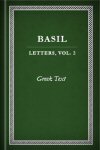
Letters of St. Basil the Great, vol. 2: Greek Text
- Author: Basil the Great
- Series: Loeb Classical Library
- Publisher: G. P. Putnam’s Sons
- Publication Date: 1928
- Pages: 255
This volume contains the Greek texts of Letters LIX–CLXXXV.
St. Basil the Great (330–379) was bishop of Caesarea and an influential figure in the fourth century Church. The Orthodox Church reveres him as one of the Three Holy Hierarchs (along with Ss. Gregory Nazianzus and John Chrysostom), and he is commemorated on January 1. He is best known for his monastic Rule as well as his monumental Treatise on the Holy Spirit. His homilies on the six days of creation (Hexaemeron) as well as on the Psalter are also treasured. The Divine Liturgy of Saint Basil the Great, used in the Orthodox Church throughout Great Lent, as well as on other specific feast days, is also attributed to him.
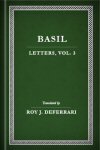
This volume contains Roy J. Deferrari’s translations of Letters CLXXXVI–CCXLVIII.
St. Basil the Great (330–379) was bishop of Caesarea and an influential figure in the fourth century Church. The Orthodox Church reveres him as one of the Three Holy Hierarchs (along with Ss. Gregory Nazianzus and John Chrysostom), and he is commemorated on January 1. He is best known for his monastic Rule as well as his monumental Treatise on the Holy Spirit. His homilies on the six days of creation (Hexaemeron) as well as on the Psalter are also treasured. The Divine Liturgy of Saint Basil the Great, used in the Orthodox Church throughout Great Lent, as well as on other specific feast days, is also attributed to him.
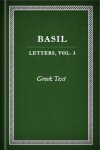
Letters of St. Basil the Great, vol. 3: Greek Text
- Author: Basil the Great
- Series: Loeb Classical Library
- Publisher: Harvard University Press
- Publication Date: 1930
- Pages: 256
This volume contains the Greek texts of Letters CLXXXVI–CCXLVIII.
St. Basil the Great (330–379) was bishop of Caesarea and an influential figure in the fourth century Church. The Orthodox Church reveres him as one of the Three Holy Hierarchs (along with Ss. Gregory Nazianzus and John Chrysostom), and he is commemorated on January 1. He is best known for his monastic Rule as well as his monumental Treatise on the Holy Spirit. His homilies on the six days of creation (Hexaemeron) as well as on the Psalter are also treasured. The Divine Liturgy of Saint Basil the Great, used in the Orthodox Church throughout Great Lent, as well as on other specific feast days, is also attributed to him.
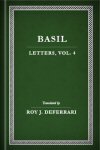
This volume contains Roy J. Deferrari’s translations of Letters CCXLIX–CCCLXVIII and Saint Basil’s “Address to Young Men on How They Might Derive Profit from Pagan Literature.”
St. Basil the Great (330–379) was bishop of Caesarea and an influential figure in the fourth century Church. The Orthodox Church reveres him as one of the Three Holy Hierarchs (along with Ss. Gregory Nazianzus and John Chrysostom), and he is commemorated on January 1. He is best known for his monastic Rule as well as his monumental Treatise on the Holy Spirit. His homilies on the six days of creation (Hexaemeron) as well as on the Psalter are also treasured. The Divine Liturgy of Saint Basil the Great, used in the Orthodox Church throughout Great Lent, as well as on other specific feast days, is also attributed to him.
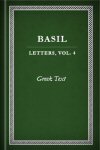
This volume contains Roy J. Deferrari’s translations of Letters CCXLIX–CCCLXVIII and Saint Basil’s “Address to Young Men on How They Might Derive Profit from Pagan Literature.”
St. Basil the Great (330–379) was bishop of Caesarea and an influential figure in the fourth century Church. The Orthodox Church reveres him as one of the Three Holy Hierarchs (along with Ss. Gregory Nazianzus and John Chrysostom), and he is commemorated on January 1. He is best known for his monastic Rule as well as his monumental Treatise on the Holy Spirit. His homilies on the six days of creation (Hexaemeron) as well as on the Psalter are also treasured. The Divine Liturgy of Saint Basil the Great, used in the Orthodox Church throughout Great Lent, as well as on other specific feast days, is also attributed to him.
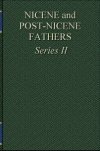
St. Basil: Letters and Select Works
- Editors: Philip Schaff, Henry Wace
- Series: Nicene and Post-Nicene Fathers, Second Series
- Publisher: Christian Literature Company
- Publication Date: 1895
- Pages: 300
Basil of Caesarea helped establish many important doctrines in the early church. He was a dedicated monastic and intellectual defender of the faith. This volume features on of his most important works, Basil’s treatise On the Holy Spirit, as well as his Hexaemeron. These works, combined with his letters—providing brief treatises and biographical and historical context—form an excellent one volume work on the great fourth-century saint.
St. Basil the Great (330–379) was bishop of Caesarea and an influential figure in the fourth century Church. The Orthodox Church reveres him as one of the Three Holy Hierarchs (along with Ss. Gregory Nazianzus and John Chrysostom), and he is commemorated on January 1. He is best known for his monastic Rule as well as his monumental Treatise on the Holy Spirit. His homilies on the six days of creation (Hexaemeron) as well as on the Psalter are also treasured. The Divine Liturgy of Saint Basil the Great, used in the Orthodox Church throughout Great Lent, as well as on other specific feast days, is also attributed to him.
This title is included in the following collections
You can save when you purchase this product as part of a collection.
Church Fathers Definitive Coll...
$11,377.57$8,499.992025 Ultimate Library
$23,999.99$17,999.99Logos 8 Ultimate Legacy Librar...
$21,749.99$21,749.99Logos 9 Ultimate Legacy Librar...
$24,999.99$24,999.99